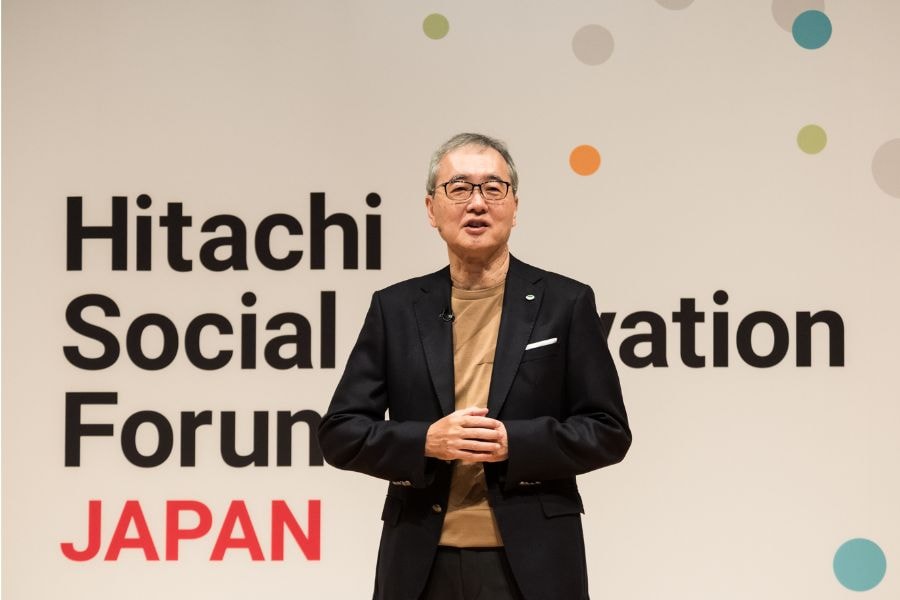Hitachi has unveiled the next generation of the OASIS™
What is Pang Pong? “Mr. Pang Pong” Explains How This Sport Originated at Hitachi
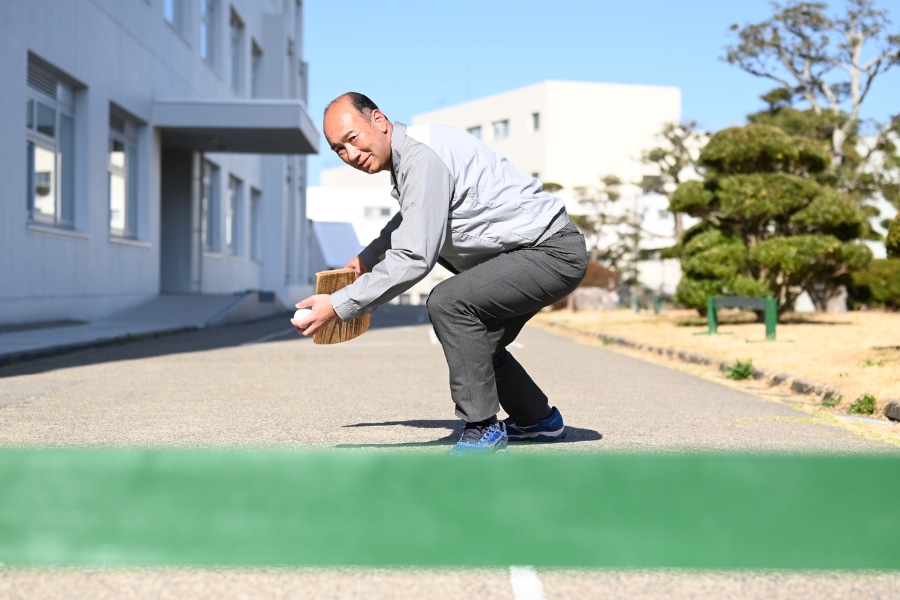
Pang pong is an easy and fun sport that is popular mainly in Hitachi City, Ibaraki Prefecture, Japan. The sport is a combination of tennis and table tennis, and its origins can be traced back to a Hitachi plant.
Even today, over 100 years after it was conceived, the sport is still popular at Hitachi plants. What is the secret to its longevity? I asked Yasuhiro Kato, a Hitachi Works employee in Hitachi City, Ibaraki Prefecture, who said he thinks about pang pong 24/7, about its appeal, and history.
A sport that combines table tennis and tennis
At 12:15, a 45-minute lunch break begins at Hitachi Works. Once employees finish lunch, they gather outside one by one on a court drawn with white lines to hit a small ball using a wooden board that looks much like a cutting board.
This is "pang pong," a ball game that looks like a mix of table tennis and tennis. Employees enjoying pang pong has become a familiar sight at Hitachi plants.
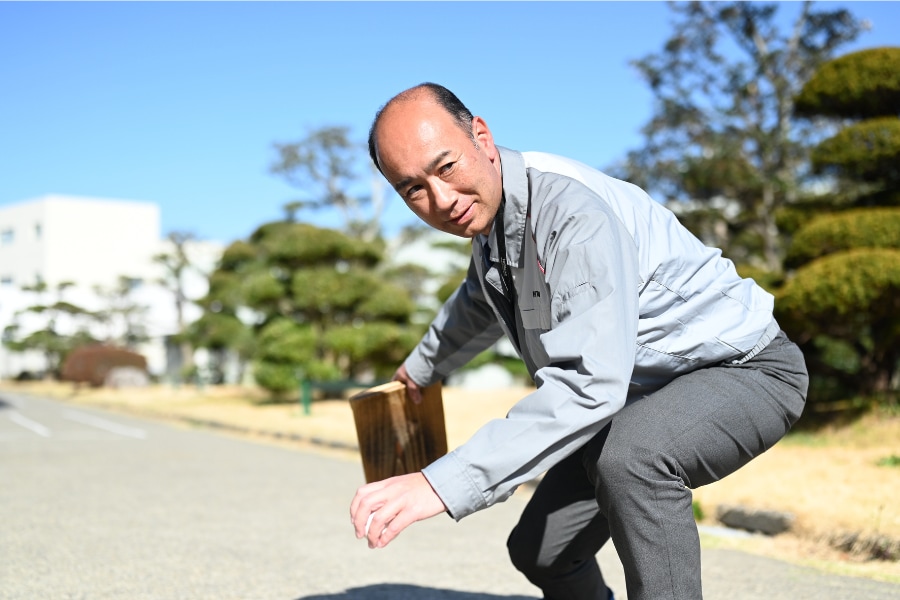
“Every day when it's my lunch break, I gorge down my lunch in five minutes and then play pang pong," says Kato of Hitachi Works, a legend in the pang pong world with 32 years of playing experience and who is also known as "Mr. Pang Pong.”
The rules of pang pong are similar to those of table tennis and tennis. The court is 2.5 meters wide and 7 meters long, divided into two parts by a 40-centimeter-high wooden "net" similar to a balance beam, and soft tennis balls are hit across the court with wooden rackets. Three-game matches are played, with the winner being the player or team that gets to four points first.
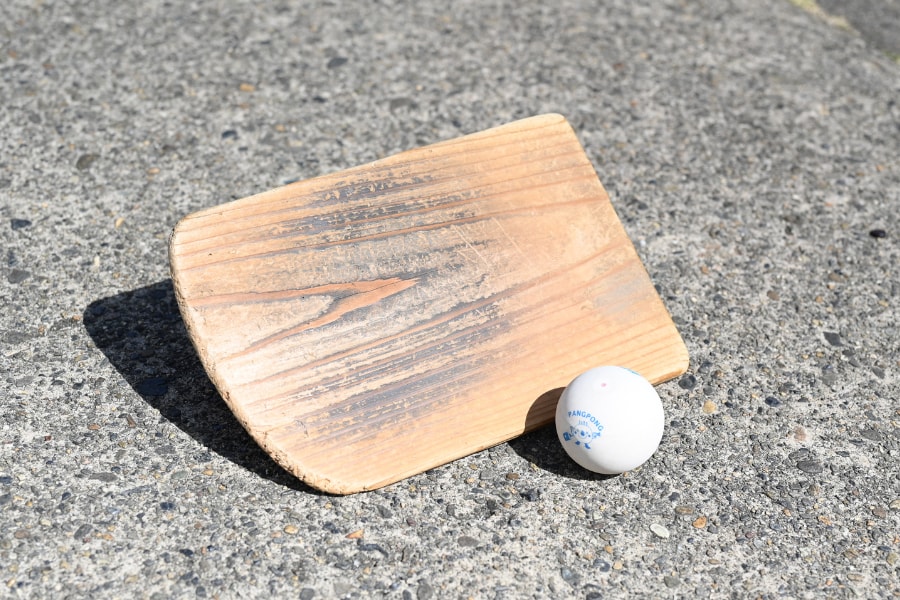
Rackets can be purchased at certain sporting goods stores in Hitachi City, and many players also buy wood at hardware stores to make their own. Kato remarked: "I have been using the same racket for more than 15 years, and I love it so much that I cannot replace it. Many employees use the same racket for a long time."
How a game for relaxing during breaks at industrial facilities became a sport
These days pang pong is played all across Hitachi City, as elementary school students can play it as an after-school sport, but its origins date back to the Taisho era (1912–1926) in Japan. Kato explains the origin of pang pong as follows.
“Around 1921, playing catch was a popular pastime at Hitachi plants as a way to unwind during breaks, but because the workers often broke windows with stray balls, this playtime was banned on plant grounds. So workers drew a line on a road and used a wooden board made from an empty mandarin orange box to hit a rubber ball across the line to each other, and thus pang pong was born.”
It was 1929 when the sport was named "pang pong" because of the sound made when the ball is hit from one side to the next. The godfather of pang pong was Naosaburo Takao, who was the plant chief at the time. Takao said at the time that he wanted to popularize pang pong to the point that it would become an Olympic sport.
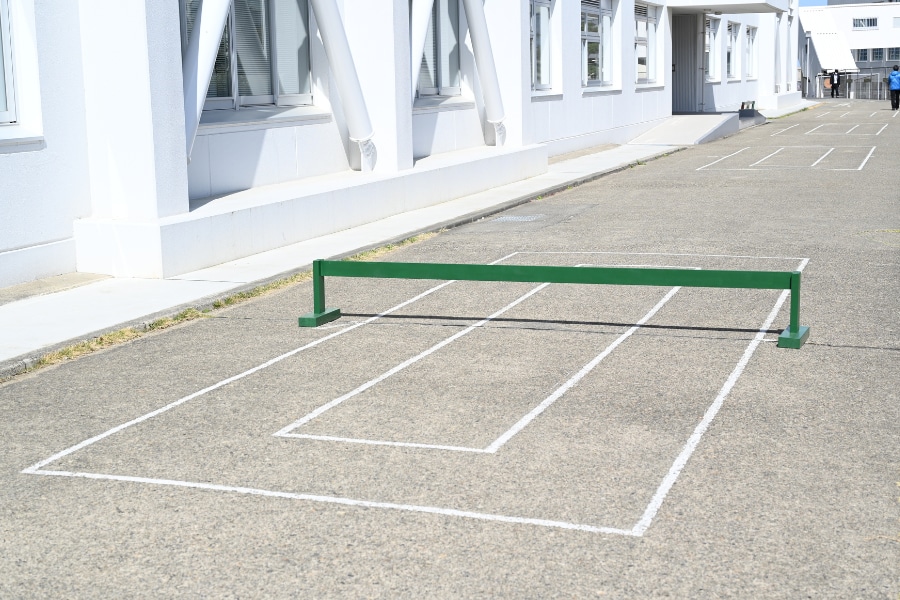
The official rules for pang pong were set at this time. To this day, tournaments have been held not only at each Hitachi business sites, but also in local municipalities.
The first "Takao Cup" tournament between Hitachi offices in the Ibaraki area was held in 1965, and the tournament celebrated its 63rd anniversary in 2018. Moreover, the Hitachi Group Pang Pong Tournament, in which players gather from all over Hitachi to compete, was held for the first time in 1963, and the 55th tournament was held in November 2019.
In addition, the Hitachi City Pang Pong Tournament is held annually in Hitachi City. Anyone can play in this tournament regardless of where they live, and it attracts many competitors from all over Japan.
Stimulating communication within the company
“I feel very embarrassed saying this, but I've won every tournament with the name ‘pang pong’ in it,” said Kato sheepishly. When asked about the appeal of pang pong and why it is so beloved, he replied as follows:
“It's pure fun to watch and play. The matches are over in a flash, so the tension for a single point is unmatched by any other sport. Anyone can play it easily and enjoyably, so I think that's why so many people have loved the game for such a long time.”
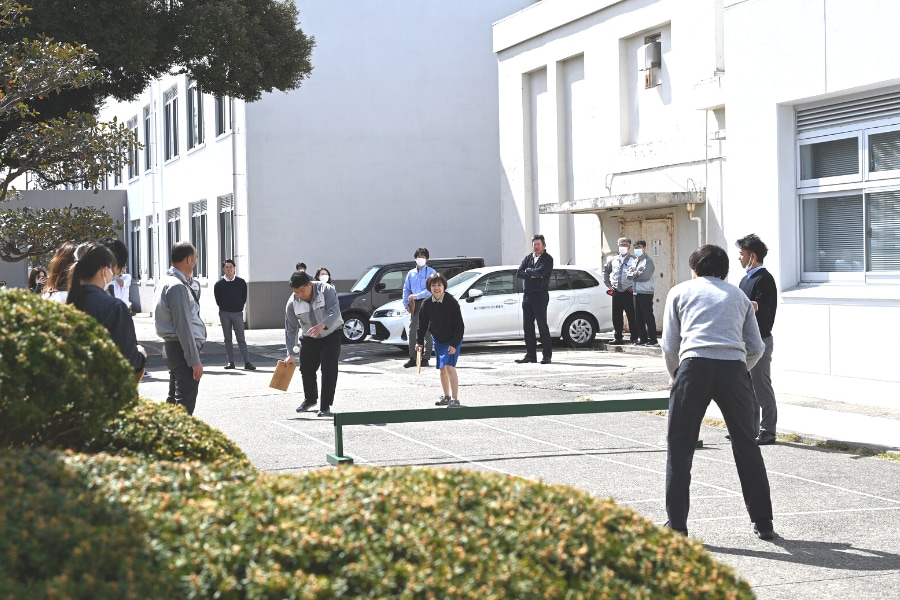
He also says that playing pang pong at the workplace helps to stimulate communication within the company.
“Through pang pong, I have gotten to know a lot of people, so I feel that it has created a workplace environment that facilitates efficient work. I also think that it helps with team building as it naturally leads to more conversations among employees regardless of position, such as in team competitions," said Kato.
Pang pong is enjoyed by people of all ages and genders. In addition to his day-to-day duties, Kato also promotes pang pong.
“Pang pong is a sport that everyone can enjoy. As such, I want as many people as possible to be exposed to it, and over the years I have taught pang pong at elementary and other schools in Hitachi City. I hope that pang pong, which has been played for more than 100 years, will continue to be a sport loved by everyone for many years to come.”

